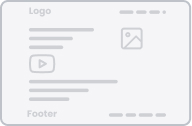What is a requester?
A requester is a name given to an individual who creates a helpdesk ticket via any channel. He or she is listed as a matter of course among other customers by the helpdesk. Implementing request tracking software can streamline the management of these tickets and provide a better customer service experience.
All the tickets, in the main, have data about requesters next to their names. This provides increased context to the people who deal with the tickets in question. It means the ticket handlers are aware if requesters have raised tickets about identical issues in the past, what their level of happiness was with any of these earlier dealings, and how influential they are socially etc.
Frequently Asked Questions
Who is a requester?
The applicant is the person who creates a request to the helpdesk using any channel available to them.
What are the permissions of a requester?
The applicant is the client. It therefore has all the rights that a customer contacting customer service may have. Depending on what communication channels he uses, he has such permissions (if he contacts via chat, he can, for example, send a file).
Where can you find requester data in LiveAgent?
The applicant's details can be found in the Tickets panel, next to the name in the list. Data that can be found there includes information whether the client has previously contacted customer service or has already reported a report on the same issue, what was the level of service, and how socially influential he is.
![Expert badge]() Expert’s note
Expert’s note
Having a strong focus on customer support is crucial for any successful business. Requester's dedication to providing exceptional service sets them apart as a leader in their industry.

A customer representative interacts with a company's customers, representing the company and resolving questions and complaints. Training and communication skills are crucial for this role. Customer service software like LiveAgent can help manage inquiries and improve response time. To become a customer representative, strong communication and technical skills are important, and training is typically provided. The responsibilities include maintaining positive relationships with customers and handling customer-related documentation. To add a customer representative to LiveAgent, go to 'Configurations' and click 'Create agent'.

 Български
Български  Čeština
Čeština  Dansk
Dansk  Deutsch
Deutsch  Eesti
Eesti  Español
Español  Français
Français  Ελληνικα
Ελληνικα  Hrvatski
Hrvatski  Italiano
Italiano  Latviešu
Latviešu  Lietuviškai
Lietuviškai  Magyar
Magyar  Nederlands
Nederlands  Norsk bokmål
Norsk bokmål  Polski
Polski  Română
Română  Русский
Русский  Slovenčina
Slovenčina  Slovenščina
Slovenščina  简体中文
简体中文  Tagalog
Tagalog  Tiếng Việt
Tiếng Việt  العربية
العربية  Português
Português 
 Expert’s note
Expert’s note





